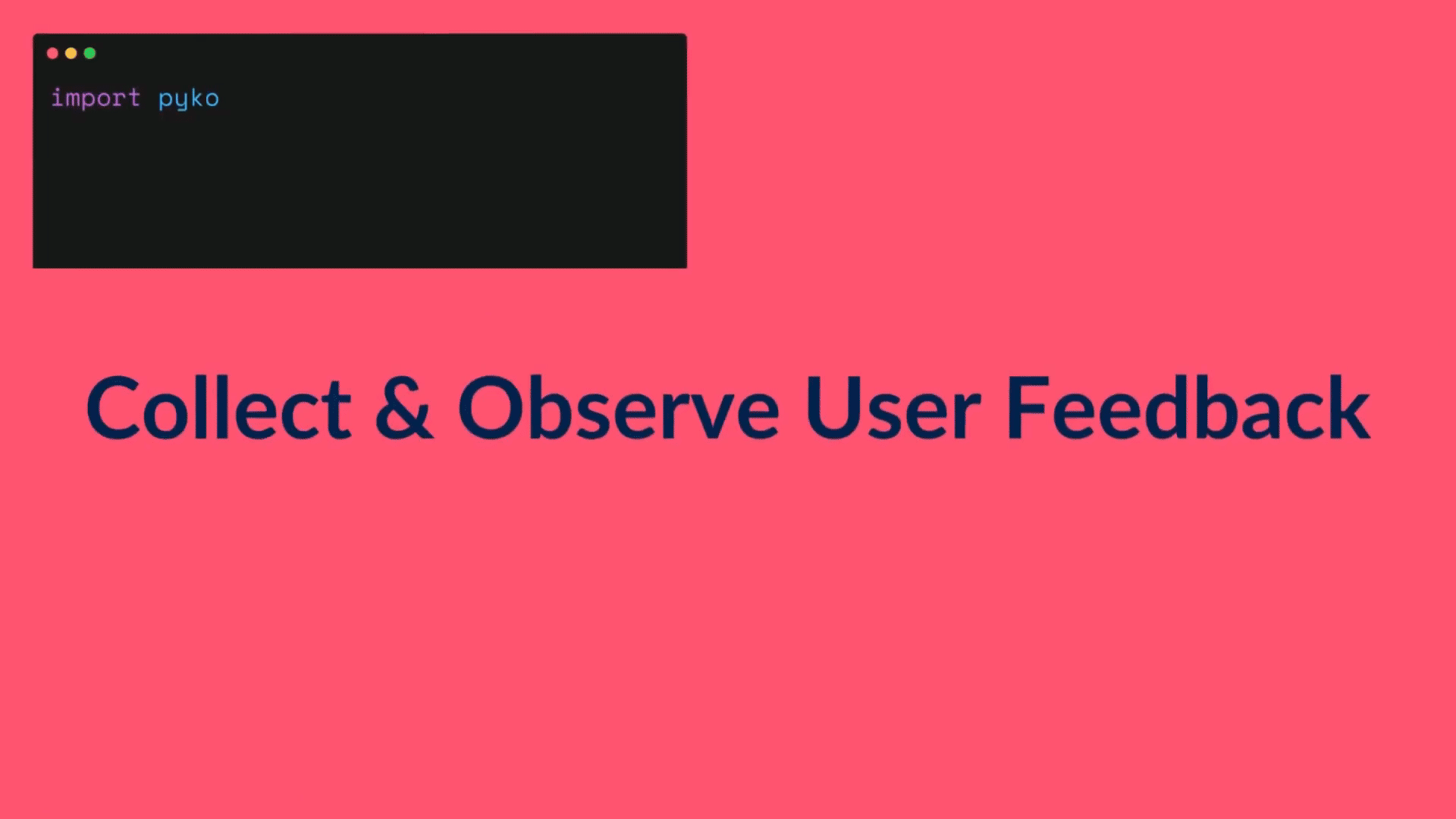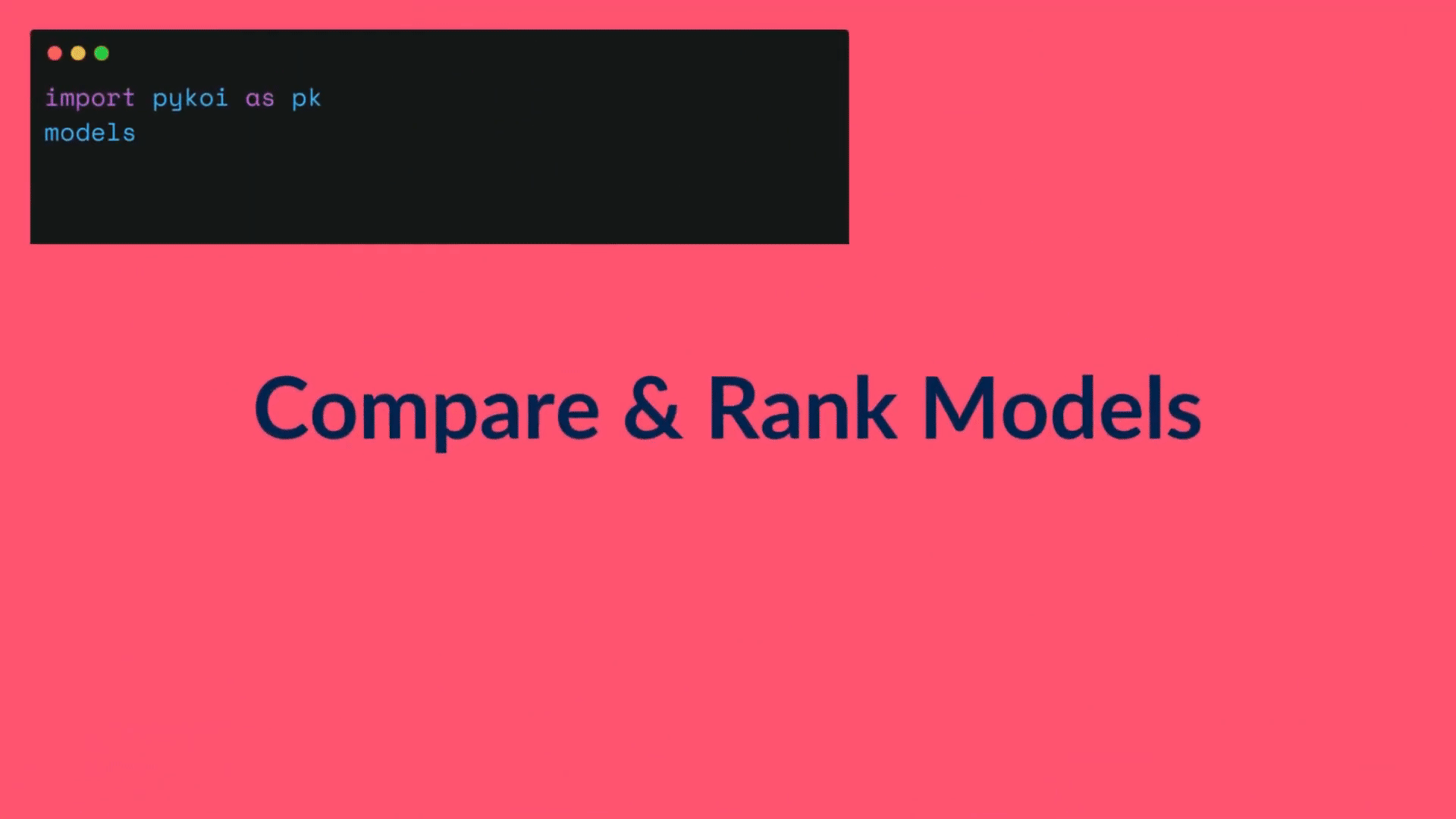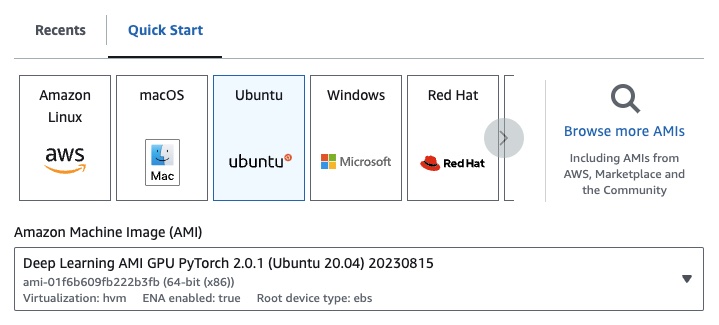pykoi is an open-source python library for improving LLMs with RLHF. We provide a unified interface including RLHF/RLAIF data and feedback collection, finetuning with reinforcement learning and reward modeling, and LLM comparisons.
pykoi let you easily get real-time user feedback and continuously improve your models. Here are some common applications:
Do you want to store your chat history with LLMs from OpenAI, Amazon Bedrock(:woman_technologist: building now :man_technologist:), or Huggingface? With just three lines of code, pykoi lets you to store them locally, ensuring 100% privacy. This includes launching a chatbot UI, automatically saving your chat history in your compute instance (cpu or gpu), and visualizing it on a dashboard. Explore the demos below:
- If you're using a CPU instance, check out demo_launch_app_cpu.ipynb
- If you're using a GPU instance, check out demo_launch_app_gpu.ipynb
- Alternatively, read our blog for more information!
Comparing models is a difficult task. pykoi makes it easy by allowing one to directly compare the performance of multiple models to each other, with just a few lines of code. If you have multiple language models that you’d like to compare to each other on a set of prompts or via an interactive session, you can use pk.Compare. Check out any of the demo below:
- If you're using a CPU instance, check out demo_launch_app_cpu.ipynb
- If you're using a GPU instance, check out demo_launch_app_gpu.ipynb
- Alternatively, read our blog for more information!
Reinforcement Learning with Human Feedback (RLHF) is a unique training paradigm that blends reinforcement learning with human-in-the-loop training. The central idea is to use human evaluative feedback to refine a model's decision-making ability and guide the learning process towards desired outcomes. Researchers from Deepmind, OpenAI and Meta Llama2 have all demonstrated that RLHF is a game changer for large language models (LLMs) training.
pykoi allows you to easily fine-tune your model on the datasets you've collected via your pykoi chat or rank databases. Check our blog for detailed instructions on how to use it.
To get started with pykoi, you can choose from any of the installation options. The choice should be based on the features you need (e.g., RAG, RLHF or all) and the compute resources you have, such as a CPU (e.g., your laptop) or GPU (e.g., AWS EC2 or SageMaker).
This option allows you to run RAG on a CPU using either the OpenAI API or the Anthropic Claude2 API. Installation of RAG (CPU) is simple if you have conda. If not, install conda for your operating system.
First, create a conda environment on your terminal using:
conda create -n pykoi python=3.10 -y
conda activate pykoi # some OS requires `source activate pykoi`
Then install pykoi and the compatible pytorch based on your os
pip3 install "pykoi[rag]"
pip3 install torch
This option allows you to run RAG on a GPU using an open-source LLM from HuggingFace. Here's a quick tutorial on setting up an EC2 GPU instance for the installation below.
On your GPU instance terminal, create a conda environment using:
conda create -n pykoi python=3.10 -y && source activate pykoi
Then install pykoi and pytorch based on your cuda version. You can find your CUDA version via nvcc -V.
pip3 install "pykoi[rag, huggingface]"
pip3 install --pre torch --index-url https://download.pytorch.org/whl/nightly/cu121 # cu121 means cuda 12.1
This option allows you to train LLM via RLHF on a GPU. Here's a quick tutorial on setting up an EC2 GPU instance for the installation below.
On your GPU instance terminal, create a conda environment using:
conda create -n pykoi python=3.10 -y && source activate pykoi
Then install pykoi and pytorch based on your cuda version. You can find your CUDA version via nvcc -V.
pip3 install "pykoi[rlhf]"
pip3 install --pre torch --index-url https://download.pytorch.org/whl/nightly/cu121 # cu121 means cuda 12.1
Congrats you have finished the installation!
If you are interested to contribute to us, here are the preliminary development setup.
conda create -n pykoi python=3.10
conda activate pykoi
cd pykoi
pip3 install poetry
Then, based the feature you need to develop, run one or more installation options below. We recommend install all the options below although it may take ~3 minutes longer.
- Option 1: RAG (CPU)
poetry install --no-root --extras rag - Option 2: RAG (GPU)
poetry install --no-root --extras "rag huggingface" - Option 3: RLHF (GPU)
poetry install --no-root --extras rlhf
Finally, if you are on a GPU, install pytorch based on your cuda version. You can find your CUDA version via nvcc -V.
pip3 install --pre torch --index-url https://download.pytorch.org/whl/nightly/cu121 # cu121 means cuda 12.1
cd pykoi/pykoi/frontend
npm install
npm run build
If you are on EC2, you can launch a GPU instance with the following config:






